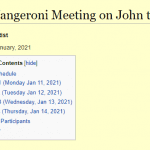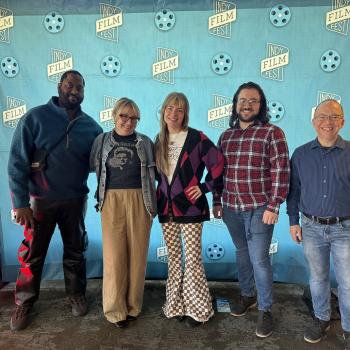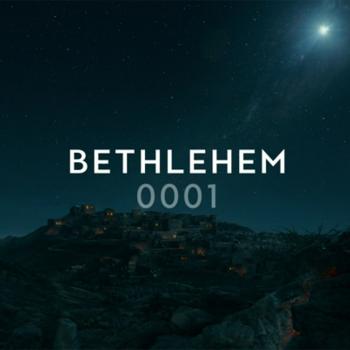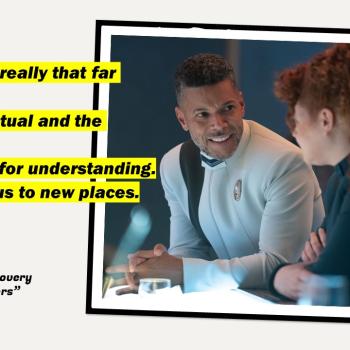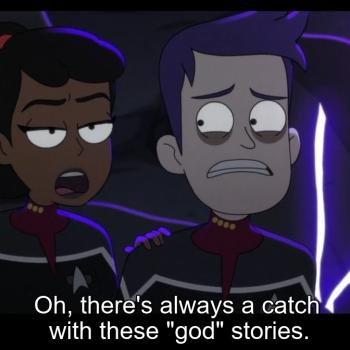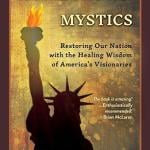As soon as I saw Tenet, I knew it was a movie that I would need to see twice before I could comment on it once. Having done that, I am happy to now do so, since the movie has more than one theological aspect to it.
One of those is in the very nature of time travel. Being able to move backwards through time so that one benefits from the knowledge acquired while moving in the other direction provides something that is almost a form of omniscience. At the very least, it can be seen that it is very hard to hide one’s actions and motives from those with this ability.
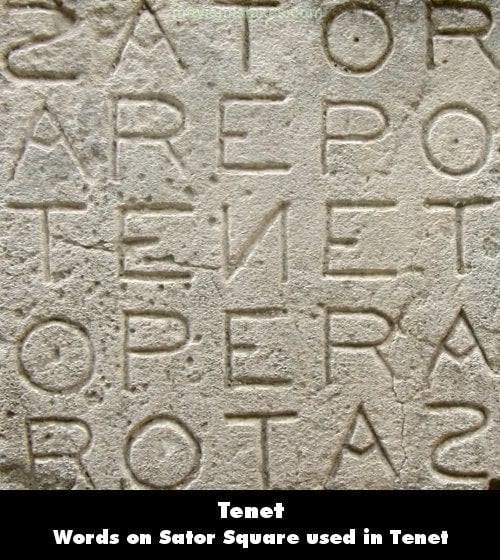
The movie’s name, however, is actually directly connected as well, and not just in the sense that I sincerely hope people as a result of the movie will stop erroneously writing about the “tenants” of their faith (as though they were landlords and someone inhabits their faith while paying rent to do so). TENET is in the center of the famous SATOR squares, an ancient puzzle which work through a series of words that are inverted horizontally and vertically:
SATOR
AREPO
TENET
OPERA
ROTAS
Those who have seen the movie will be aware that all of those words appear in some form or another, whether as names of individuals or companies or simply as words. As Alissa Wilkinson writes for Vox, this is a palindrome in four directions. The palindromic structure is symbolic as the movie moves backwards and forwards through the same events, and of course Tenet which appears in the center of the square it itself a palindrome as a word. That is one reason why everyone should see the movie at least twice. We often see the same incident from more than one person’s perspective, moving in more than one direction through time. It is helpful, and perhaps crucial, to see the same scenes again with that knowledge in mind. If nothing else, you’ll notice the brilliance of some of the filmography and attention to detail with respect to matters that no one is likely to have been paying attention to the first time they saw a particular scene (although the director does a good job of making sure we notice them, even if we do not yet know their significance). Christopher Nolan’s 2000 movie Memento also does subversive and non-linear things with time and narrative, and so this is clearly an interest of his. It isn’t clear that the squares were originally linked to Christianity, but the potential to spell out PATERNOSTER in the form of a cross in two directions at the very least led Christians to embrace this mysterious symbol. It is appropriate, given the movie’s plot, that the symbol is laden with ambiguity and uncertainty. As we watch, we are unsure until near the end who is behind certain events, just as it is revealed at much the same time that even the resolution we witness is “only halfway there.” This is called a “temporal pincer move”: as a person or team moves through an event both ways, in the end they know every detail and can act accordingly. It isn’t clear that this works either in terms of logic or physics, but as a concept and a plot for a movie it is fantastic.
The movie has lots of interesting details. On the one hand it suggests that cause preceding effect is just the way we see time. It is argued that free will is not denied since either way time and influence runs our decisions are a factor. The movie begins by introducing technology that has come back through time and is itself temporally inverted, meaning that its behavior and interaction with the world around it seems from our perspective to involve effect preceding cause.
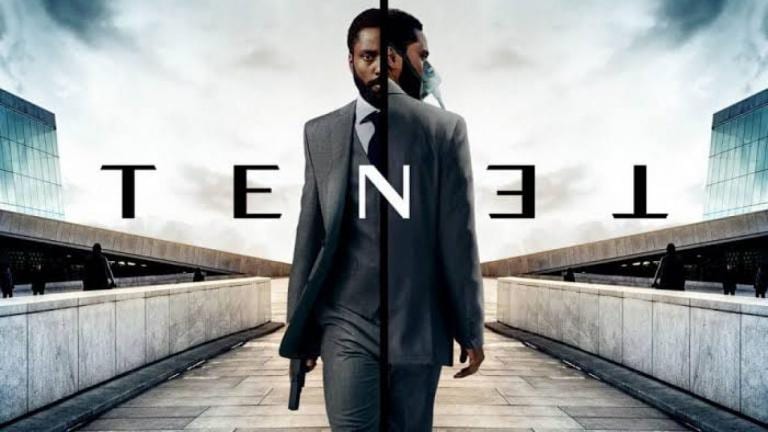
Andrei Sator is the chief villain of the movie, and his name is obviously significant. He says he has always had instincts about the future, and that is how he built this life. This hints at what we later learn, that while gathering plutonium in the ruins of his town he found a message left for him from the future, providing him with this technology to invert objects and people temporally. He sends gold through time to himself that allows him to finance this.
The central positive character we simply come to know as “the protagonist” which also makes things interesting. When time and causation can run in either direction, can we ever know whether we are the central individual or a mere pawn? If not us, can we know who is?
As the story unfolds we learn that there is more at play than just technology that inverts objects including weapons and also people. That alone would be serious. But a future technological development has discovered how to invert the entropy of the entire world. If activated that would destroy all life on the planet. The scientist who discovered this broke the algorithm for doing so into nine sections and hid them in the past in the places she thought most secure: nuclear facilities. But the end of the Cold War left those vulnerable at a moment when it became possible to find one, which is what Sator did, and from there to find ways to obtain others.
At one point the character Neil explains the grandfather paradox. Those in the future developing this technology believe they can do whatever they want to their ancestors with no consequences. He says, “We’re the people saving the world from what might have been.” There is discussion of fanaticism and belief in conversations between the protagonist and Sator. We learn that Sator is working with some forces in the future, when their seas rose and their rivers ran dry because of what we human beings did in our time and before. He says they had no choice but to seek to invert time and make our past their future as a means of surviving. The question is raised whether he is “a madman” or “a god of sorts.” Sator says at one point, “My greatest sin was bringing a son into a world I knew was ending.” There is also “an expression of faith in the mechanics of the universe.” We might want to think of Einstein’s faith that “God doesn’t play dice.” Rather than narrowing “faith” to irrational assertions by religious fanatics, which is unhelpful, I like that the movie explores both the universality of faith as something we all have, and the limits of what reason can deduce in a universe full of potential surprises.
There is also an exploration of the problem of evil. The team that the protagonist joins forces with, and later learns is responsible for assembling through actions in the future, saves the world from “what might have been,” “the bomb that didn’t go off.” We complain and question the goodness of God and/or the universe because of what happens, but how would our perspectives differ if we had a sense of what might have happened and yet did not because it was prevented?
This is definitely a movie that one must watch at least twice. We get the chance to watch the inverted scenes understanding what we are seeing, which makes them rewarding in new ways. The best movies reward us on the first viewing and yet disclose further depths and unnoticed details upon repeated viewings. Having seen it twice now, I cannot help but wonder what I’ll notice the next time I watch it.
Have you seen Tenet yet? I certainly recommend it, and am interested in hearing from those who have seen it about your impressions and thoughts after one, two, or more viewings. If you haven’t seen it yet, or are ready to see it again, you can watch it via Amazon:
Other articles of possible interest:
The Physics of Tenet is Shaky But…
Even the Gospel Coalition felt the need to comment on the movie.
https://www.thegospelcoalition.org/article/tenet-film-review/
Also relevant:
National Geographic on time travel




